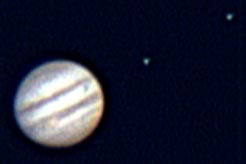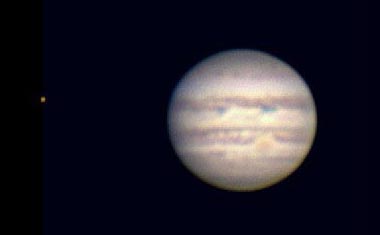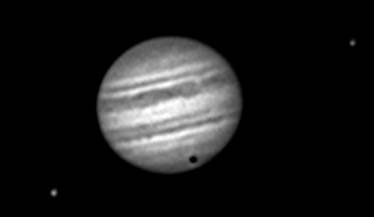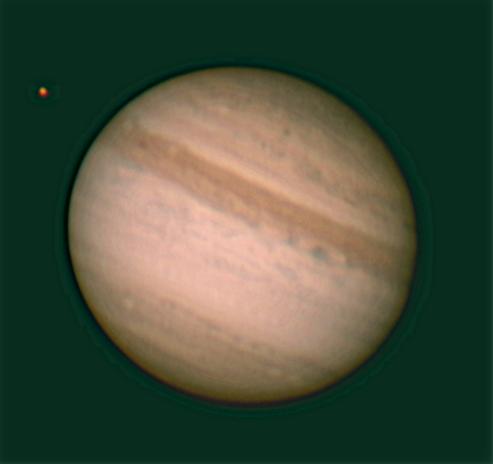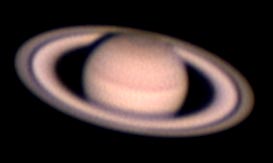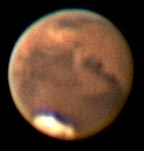Mars
This image of Mars was taken during a night of exceptionally stable air during the close approach of August 2003.
It still appeared only about half the size of Jupiter, but the still air allowed very high "magnification" (very long effective focal length) to be used.
The white feature at the bottom is the south polar cap.
Valles Marineris, the largest canyon in the solar system, runs vertically across the center.


